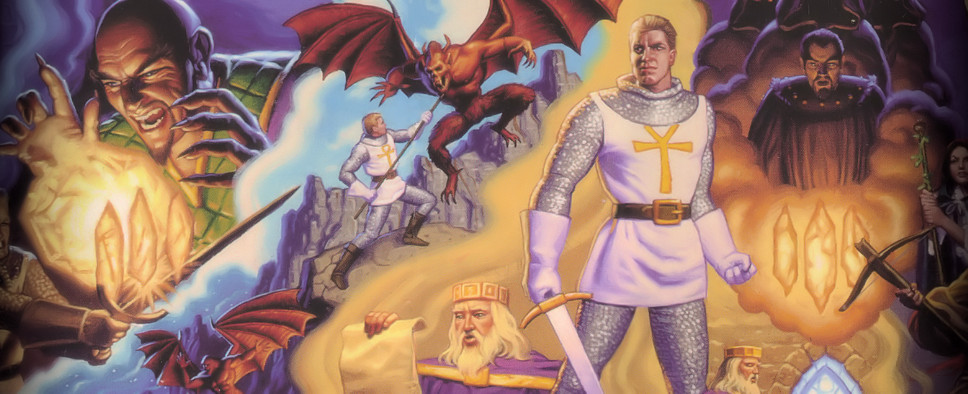Ultima Online 20th Anniversary Reflections and Interview
-
Category: News ArchiveHits: 1614

During the development of UO, we carefully watched the development and release of Diablo and heaved a sigh of relief when we realized it was a graphical version of Rogue or NetHack, rather than a persistent world (today people toss around “roguelike” as a common term. It didn’t use to be). I remember a bunch of us gathering around one computer to play the demo version. Its graphics were much better than what we were already committed to, but its multiplayer was very limited. “That is forbidden in the demo” is still an occasional catchphrase in our house – our research sessions always ended there at the last doorway in the single-level demo.
Quake had come out in 1996, and many of the art team played it on the company LAN in the afternoons. Most online gameplay was LAN play, in fact; services like DWANGO (launched in 1994) allowed LAN games to be played over the Internet using a dedicated dial-up service that served as a matchmaker. Around 1995 to 1996 TEN and MPath (aka MPlayer, and eventually GameSpy) showed up, and started bundling games with LAN play into a subscription that let you play them online via the Internet. These services varied in price from $30 a month to $30 a year, on top of ISP fees, but by and large didn’t offer much if any persistent world gaming (TEN had Dark Sun Online which came out in ’96).
There were MMOs, for sure. You can read over the timeline to see just how many preceded Ultima Online – quite a lot, particularly if you count all the text-based worlds, as I do. Simutronics had its text-based MUDs running, such as DragonRealms and Gemstone. Mythic was their competitor. WorldsAway, a version of Habitat, was on CompuServe, as were Islands of Kesmai and Air Warrior. The aforementioned Dark Sun Online and also Lineage were played in the UO offices during the development process as well, though they were both in pretty rough state.
And of course, Meridian 59 beat UO to market as well. Sometime in 1995 or so, Mike Sellers logged into LegendMUD, and I toured him around. If I was online, I often greeted newbies personally, and if they were people involved in creating MUDs, I would offer to tour them around the game, showing off the many things that it did that were different from the run of the mill. After the tour, Mike talked to me about a possible job on Meridian 59, and I turned him down because Origin had already made an offer. I recommended Damion Schubert for it instead.
Lineage, when I first tried it, consisted of one house, that you stepped out of onto a killing field and basically died immediately. DSO was much larger, but had some sort of turn-based combat. If you got hit, you were put into the turn sequence for everyone in the fight; this resulted in a blob of dozens of players waiting a half hour to swing once or try to escape the fight. (I honestly don’t know whether this was a bug at the time or what – I never played it again). Sierra had launched The Realm in 1996; it had a side view, and each fight was actually an “instance” – when you engaged in combat with another entity, outsiders saw a cloud with fists and whatnot poking out, and you were sent to another screen to do battle.
As Richard Garriott, Dr. Cat, and others tell it, the idea for an online, multiplayer version of the Ultima series had been around for quite some time. There was an abortive deal with Sierra to create a “Multima.” Dr. Cat, a long-time Origin veteran who had left the company, was interested enough in online gaming that he created a game called DragonSpires which was way ahead of its time, and the predecessor to Furcadia. Richard and Starr Long went to the executive greenlight board at Electronic Arts multiple times trying to get money to fund a prototype, and after being turned down each time, finally got a check for $150,000 or $250,000 (I have heard varying figures) directly from Larry Probst, the CEO.

